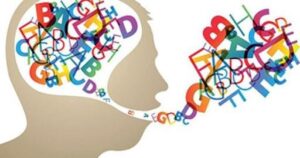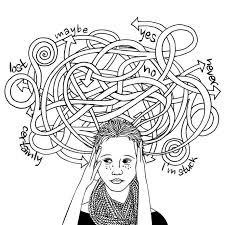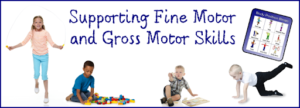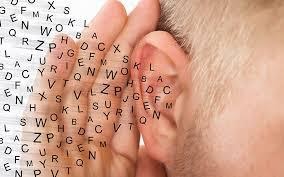Hearing and Listening
“The skin is only a differentiated piece of ear, not the other way around.” Alfred Tomatis
Your ears are critical to preserving brain function! The auditory system has an amazing number of neural pathways that are vital to many of our daily functions such as Movement, Balance and Posture, Communication, Language, Memory, Emotional Regulation, Socialization, and Learning.
The efficiency of these pathways can be affected by many things. Aging, brain injury, emotional trauma, illness, accidents, poor memory and many other neurological conditions.
HEARING AND LISTENING – What’s the difference?
Hearing is considered to be an automatic process during which someone with the ability to hear, can process sounds that are heard. Sound waves are received and sent to the brain for automatic decoding.
Listening is an active and very conscious process and involves a great deal more than just receiving sound. It requires the person to pay attention as well as take information in from all the other senses, especially sight.
Non-verbal cues such as hand gestures, facial expressions etc. all play a role, as well as meaning, the tempo, pitch and phrasing of what is being said. Interpretation of the information received relies on the capability of one’s brain and mind function, past experiences and links to past and present knowledge.
Listening needs both hearing and the ability to correctly interpret in order to be effective and efficient. It is undoubtedly a critical life skill necessary to enable us to function in a world of communication.
While the ability to attend to what is heard is important and considered a conscious function, sensory input can unconsciously affect our ability to attend. Some of us are more easily distracted than others and there are a myriad of factors that can impact this distractedness.
In fact, many people who have a diagnosis of Auditory Processing Disorder also show signs of Attention Deficit Disorder.
To find out how LearnED can help, click here.
Autism and Sensory issues

‘Behaviour is the mirror in which everyone shows their image’ – JW von Goethe
‘Human behaviours are expressions of the functional organisation of the various parts of our body and especially of our nervous systems and brains.’ They interact with one another, dynamically. Sometimes weak systems cause others to become stronger, for example, as a person who is deaf-blind relies on touch and smell.
HANDLE®
Seen by many as a ‘diffability’ rather than a disability, autism is a ‘developmental disorder of brain function typically manifested in three classic symptoms: impaired social interaction, difficulty with verbal and non-verbal communication and severely limited activities and interests’ (Bluestone, J. p1 The Fabric of Autism 2004)
It is seen as a complex disorder and therefore, establishing a rigid set of rules for teaching these children is a huge challenge.
I completed a Post Graduate Degree in Specialist Education with an endorsement in ASD, and co-authored the award-winning book “Autism Spectrum Disorders in Aotearoa New Zealand: Promising Practices and Interesting Issues (2006)”.
I have also worked with individuals on the Autism spectrum; from severe to high-functioning and I fully agree that there are many theories and approaches that claim to work for those with a diagnosis of autism but there will always be the individual with autism that will not fit the rule book. Each individual I have encountered is totally unique and indeed must be respected as such!
Very often, the procedure to getting an official diagnosis that will offer the support needed, can be a long, frustrating and sometimes very emotional one. Individuals on the spectrum have challenging sensory issues to some or other degree and help is needed sooner rather than later!
To find out how LearnED can help, click here.
Dyslexia

Dyslexia is the most common learning disability and occurs all over the world. It is often known as a reading disorder that affects many people to various degrees, yet activities such as spelling, writing, and mathematics can also be affected as letters, number and words can be reversed or altered.
Many people with a diagnosis of Dyslexia may also have other diagnosis or symptoms of conditions such as:
- Attention Hyperactivity Deficit Disorder (ADHD) characterized by difficulty sustaining attention, acting impulsively or being hyperactive,
- Auditory Processing Disorder (APD) that affects the ability to process Auditory information,
- Dysgraphia that is a difficulty with writing and hand-eye coordination.
- Developmental coordination disorder which is a neurological condition. Balance, daily organization, short term memory, fine-motor skills, difficulty with speech sounds are some issues.
Dyslexia is believed to be caused by both genetic and environmental factors and relate to factors within the brain’s language processing.
Rather than ‘curing’ dyslexia, it’s impact or degree of difficulty can be decreased. Each treatment approach needs to be adjusted to the needs of the individual.
Many people see dyslexia as a ‘different way of learning’, and that while there may be many downsides, there can also be benefits. People with dyslexia often have the ability to ‘see the bigger picture’. They can be business entrepreneurs, highly creative, and are good at problem-solving!
Click here to read more: https://www.nessy.com/us/parents/dyslexia-information/9-strengths-dyslexia/
To find out how LearnED can help, click here.
Bibliography:
https://en.wikipedia.org/wiki/Dyslexia
Communication – Speech and Language Skills

The voice
The ability to communicate using one’s voice depends on accurate perception and analysis of sound. Good verbalization requires good self-listening: listening to one’s own voice to assess its quality, intensity, and accuracy.
The sound of our voice is mainly transmitted to the ear by the vibration of the bones of our skull, a process called bone conduction. Alternatively, when sound waves in the air enter our ears, this is called air conduction. The sound is then analyzed by the brain, which directs a response with the voice.
There are constant exchanges of information happening between the ears, the brain, and the voice. This auditory feedback loop is sometimes disrupted—usually because of cognitive or emotional reasons—leading to a breakdown in listening, and eventually in verbalizations as well.
This breakdown can impact the rhythm, tone, or intensity of our vocal productions.
A compromised auditory feedback loop can result in a person’s reluctance to communicate, difficulty speaking, lack of fluency in speech, lack of accuracy and precision of verbalizations, loss of control of intensity (volume), and other challenges.
By actively exercising the auditory feedback loop with both air and bone conduction, the Tomatis® Method restores the link that connects the ear, brain, and voice, thereby restoring our ability to speak in an effective and efficient way.
Language
By improving the relationship between the ear, brain, and voice, the Tomatis® Method also helps individuals with language skills. An important foundation for language learning is phonological awareness.
Phonological awareness is our ability to recognize and manipulate the sounds used in language. The sounds of language include a complex system of pronunciation, rate, rhythm, and tone. For some, mastering such aspects of language is challenging and sometimes occurs at a slower rate than their peers.
Instruction of phonological awareness is essential to language learning and there’s a way to make this process more efficient.
By training the brain through air and bone conduction, the Tomatis® Method promotes enhanced perception of the fundamental sounds of language, which solidifies the foundation for further language learning.
To find out how LearnED can help, click here.
Attention and Working Memory

Both Attention and Working memory are key factors to learning new information. Attention enables information to enter the brain; working memory helps the brain to make sense of it and so retain it.
Many children and adults who struggle to learn have problems with either or both of these.
Even though Attention and Working Memory are closely linked, they are very different.
Paying to gather information attention is one process. Storing this information in the short-term memory ‘storage bucket’ in the brain is another. This is where the brain manipulates, makes sense of the information, decides on its usefulness and application. This is called “working memory”.
Once processed, the information then moves into the long-term memory for later recall. If however, it is not stored in an organised way, being able to recall it, could be tricky. Much like trying to find that tin of beans in a chaotically packed grocery cupboard!
People who battle with diagnoses of ADHD and ADD as well as those with the language of instruction not being their mother tongue may face huge challenges. Not being able to divide your attention between multiple tasks (selective attention) or filtering out what is not important and focusing on what is, can be exhausting!
https://www.tomatis.com/en/areas-application
To find out how LearnED can help, click here.
Fine and Gross Motor Skills

The ear is not only the most powerful sensory organ of the human body, it’s also a driving member. The inner ear contains a structure called the vestibule: a sensory organ for balance.
The vestibule senses the slightest movement of the body and passes this information to the brain. It’s heavily involved in regulating motor skills (movement), laterality (right- or left-side dominance), muscle tone, and verticality (our upright posture).
Work on the vestibular system can lead to improved motor skills needed for tasks such as walking, running, jumping, or tapping our feet to a beat.
Work on the vestibular system can also improve balance while minimizing balance-related issues such as dizziness and nausea.
By transmitting deep rhythmic sounds, the Tomatis® Method acts directly on the vestibule to improve motor skills, laterality, regulation of muscle tone, and verticality.
In addition, the Tomatis® Method improves the coordination of right and left movements by acting naturally on the laterality of our hearing system.
To find out how LearnED can help, click here.
https://www.tomatis.com/en/areas-application
Balance, Coordination and Movement

“The eyes are to the brain what the mouse is to the computer” (de Jager, M. 2006)
As our eyes move upwards, downwards, left and right, so different parts of the brain are accessed.
Likewise, as our vision, touch and vestibular function are activated as we move through space, so our brain is activated to produce the correct and appropriate behavioural response.
Balance and coordination play a vital role in our ability to move. For some of us, moving quickly, accurately and efficiently and getting the movement or behaviour response we would like, is easy.
For others, it can result in anything from motion-sickness or dizziness to poor reading skills and a struggle to master the skill of learning.
An inefficient connection between the brain and the senses can sometimes be as a result of neurological immaturity, i.e. weak neural connections, and without being treated, can lead to a lifetime of coping with movement and learning difficulty.
A new born baby is completely helpless and clueless; much the same feeling as you would have if you were blindfolded, abducted and left on the moon to fend for yourself!
Development with the right conditions, a healthy body and care transforms a baby from a “human becoming” into a ‘human being”. The neurological system links all the different body systems (the organs, senses, bones, muscles, veins, and arteries) together. It is the communication network that ensures our survival.
Fortunately, we are born with the blueprint for the unfolding and development of that communication system. Our reflexes are that blueprint.
The reflexes develop chronologically and have a limited lifespan. Once it has done it’s work, it retires, allows the brain to take control and hands over to the next reflex in the sequence of development. Much like passing the baton in a relay race.
A strong and healthy development of the reflex sequence is crucial for sound neurological development; the precursor to movement, perception, emotional and cognitive development.
Sometimes a reflex does not complete its job and remains active. This then signals a neurological weakness as it will interrupt the reflex sequence and will disturb the emerging reflexes that must follow.
The building foundation will become shaky! The body will try to compensate, possibly struggle to cope and leave you feeling stressed and exhausted at the end of each day as you expend an enormous amount of energy to get through.
Mind Moves: removing barriers to learning – de Jager, M. 2006
To learn more about how LearnED can help, click here.
Emotional and Stress Regulation

Emotional regulation refers to a person’s ability to effectively manage and respond to an experience and develop resilience.
https://tomatis.com.au/who-do-we-help/emotional-regulation/
Behaviours are signs that tell us something is affecting daily function; something is preventing or obstructing the ability to perform tasks in a more efficient way.
When the survival part of the brain is activated, proper learning and daily function cannot happen as efficiently and effectively as they should.
In survival mode, a person often cannot express what is going wrong for them, just that they feel anxious instead of calm and connected.
They may also be disinterested, confused, forgetful, daydream, clumsy or have difficulty moving through tasks, and will ‘shut down’ if they perceive themselves to be ‘under attack’.
For example, think about a person attending a lecture or a child going to school, feeling relaxed, happy and being able to listen carefully in order to absorb what is being taught. However, if that person or child were to have had a serious argument before attending the course, they would be very emotionally upset and find it too difficult to concentrate on the speaker/teacher because of their inner conflicts.
People who are trapped in past emotional problems are preventing themselves from moving forward in their lives.
Did you know?? When our ears are function properly, they supply about 80% of our brain’s energy.
Sound vibrations go directly to the auditory processing centre to be analysed, interpreted and, performed as behaviours or responses to the situation. However, if a person has an emotional blockage which can be linked to some traumatic experiences back to early childhood, it can result in emotional dysregulation.
The person might express feelings of frustration, aggressiveness, and irritability and even have tantrums as a non-coping way to deal with stressful and challenging situations.
The Tomatis® Method exercises the ears by emphasizing the high-frequency sounds that stimulate the brain (low-frequency sounds drain energy away).
The high frequency of Mozart, especially when filtered, is very energising. Whereas, Gregorian Chant slows down the heartbeat and promotes deep relaxation.
Both types of music are used in the Tomatis® listening program and they have a different effect on the muscles of the body: Mozart stimulates the extensor muscles and Gregorian Chant acts on flexor muscles!
The Tomatis® Method is an educational program conducive to the therapeutic process as it encourages an individual to be more focused, present, and forward-looking as well as helping to find calm and peace.
In these fast-paced, often stressful and seemly crazy times, in order to cope with the demands placed upon us by ourselves and by society in general, we need to stay composed and positive. We can unconsciously turn on emotional regulation mechanisms to cope with tricky situations and to adapt to these possible stressors.
Emotional blockages can prevent people from listening. They can become stuck emotionally at a younger age; specifically at the age at which they suffered the original trauma.
Prolonged or one-time traumatic experiences can lead to emotional dysregulation, preventing normal cognitive and subjective growth and good listening. Good listeners are good learners and communicators, and are emotionally balanced.
The Tomatis® Method uses the inner ear as a pathway to the brain systems that are responsible for regulating emotion, memory and learning. It helps improve mood and stress regulation.
“The appearance and conscious self-control of the listening posture leads to the desired calm so that the heart’s ear opens”. ~Dr. Alfred A. Tomatis
To find out how LearnED can help, click here.
https://www.tomatis.com/en/areas-application
https://tomatis.com.au/who-do-we-help/emotional-regulation/
Learning

If we have the capacity to learn, why then do so many of us struggle with it? According to Jensen, E. (1995), humans are biologically designed to survive, and their single competitive advantage is their ability to learn.
When it comes to learning, staying positive and motivated is a huge challenge for many students. How many times does your child find a million and one reasons not to do their homework, or use delay tactics every morning they have to get ready for school?
When questioned as to what is so challenging about school and learning for them, so often they comment “I can’t do math” or “Reading is tricky” or “I hate writing!” They no longer choose to learn as they are no longer motivated or willing to do so.
The answer is to find the barriers that prevent the learning happening. That is easier said than done, for there are many barriers that could be present. Seldom is there only one, and finding the ones that are proving a challenge are a challenge in itself!
A list of just a few of the possible barriers:
- Emotional – Stress, anxiety, self-regulation issues, etc.
- Language – Learning in a second-language environment
- Learning style – one of the most complex barriers, yet as personal as your fingerprint!
- Sensory and integration barriers – over-sensitivity to environmental factors such as smells, sounds or visual over-stimulation can greatly affect learning.
- Physical disability
- A medically diagnosed condition
- Early exposure to environmental factors that have negatively impacted function.
At LearnED, the aim is to help a child improve his/her ability to learn through interventions and therapies such as Tomatis® Sound therapy, Rhythmic Movement integration (Primitive reflexes) and Interactive Metronome®, as well as many years of experience as a teacher and Specialist Support teacher.
Click here to find out how I can help.
Musical Ability

“Unique among Tomatis’ discoveries is, . . . the notion that there is empirically such thing as a “musical ear,” one which has a quite specific ascending curve of response. It is the ear of the diva, or the monk – providing that they are singing properly. It is the same ear required for mastery of any instrument. Paul Madaule – The Listening Centre
After the Second World War, Dr Alfred Tomatis, a French ear-nose-throat doctor, studied how hearing and hearing loss affect the voice.
He developed the Tomatis® Method of auditory re-education to help his patients with voice or hearing problems. To his surprise they improved their performance in many other areas – not only voice and auditory processing (or listening as he called it) and the improvements were lasting!
Since 1959, there have been numerous published articles and peer-reviewed studies, pilot studies, presentations, and case studies covering different application areas of the Tomatis® Method, including musicality and singing for professional musicians and school children. https://www.tomatis.co.nz/tomatis-research/
To find out how LearnED can help improve your singing and musical ability, click here.
Self-regulation

Self-regulation is one of the biggest tasks of child development.
It includes being able to: regulate reactions to emotions like frustration or excitement, calm down after something exciting or upsetting or focus on a task.
A lack of self-regulation can be seen in children who struggle with learning, struggle to pay attention, struggle to control their impulses and also struggle to develop lasting relationships with others.
In a school situation, they may be rejected socially, get less positive feedback, will be more off task, and generally have a less positive learning experience.
It is made easier when a child is around adults who are able to self-regulate, through play and exercise, eating healthily, getting plenty of restorative sleep and being around adults who are able to model good self-regulation.
When children have meltdowns, it is because they have used up all their energy to manage the stresses they face daily.
Dr Stewart Shanker likens self-regulation to driving a car. A competent driver is able to accelerate, brake, allow for changes to the road, be aware of traffic conditions, speed zones, and pedestrians all the while maintaining the pressure on the accelerator to move forward at an acceptable speed to reach a destination.
Some children press too hard on the accelerator, others move between gears to quickly, some don’t slow down or accelerate fast enough.
It’s all about regulating timing, finding the perfect speed and dealing with any hurdles or stressors in the best way possible without using too much energy and arriving at a destination with a smile on their face!
Self-regulation requires well-developed motor skills as well as the ability to process sensory information; how fast or how slow to move or respond until function is ‘just right’.
To find out how LearnED can help, click here.
www.yourtherapysource.com
Incredible Teachers – Webster-Straton, C. PH.D (2012)
Each program is created specifically to the individual needs of the client and is unique to that individual.
Each program or intensive is approximately 60 to 80 minutes a day for between 10 to 14 days. For lasting change, at least 3-4 intensives are recommended.
WHAKATAUKI
“Ma te rongo, ka mohio, Ma te mohio, ka marama,
Ma te marama, ka matau, Ma te matau, ka ora.”
“From listening comes knowledge, from knowledge comes understanding,
From understanding comes wisdom, from wisdom comes well-being.”
LearnED’s focus is to provide therapeutic programs using Tomatis® Sound Therapy, Interactive Metronome and Primitive Reflex Integration. Each program is specifically designed to meet the unique needs and goals of every client.
RMTi® is a movement-based, primitive reflex integration that uses gentle isometric pressure, developmental movements and self-awareness to help overcome learning, sensory, emotional and behavioural challenges for both children and adults.
https://www.rhythmicmovement.org
The Tomatis® listening program helps with brain stimulation and cortical arousal, fine and gross motor skills, attention and working memory, emotions and stress regulation, speech, reading and writing. The Listening programs can be delivered to individuals or groups.
Interactive Metronome® (IM) is an evidence-based training and assessment tool designed to improve cognition, attention, focus, memory, speech/language, executive function, comprehension, motor and sensory skills.
The protocols and programmes used by LearnED, including the TOMATIS® Method, are Educational Techniques and are not considered medical treatments, or a means to establish a medical diagnosis. The content of this website is for informational purposes only. It should not be considered as medical advice or a substitute thereof. We do not suggest stopping any medication or psychological treatments.
Contact LearnED
Contact me now to book a FREE, no-obligation, 1-hour consultation.
We will discuss any further questions or concerns you have, and give you the information you need so you can invest with confidence in a journey of success!
Julianne Swanepoel
Phone | 02102424750
Email | julianne@learned.co.nz

Contact me now to book a FREE, no-obligation, 1-hour consultation.
We will discuss any further questions or concerns you have, and give you the information you need so you can invest with confidence in a journey of success!
Julianne Swanepoel
Phone | 02102424750
Email | julianne@learned.co.nz


